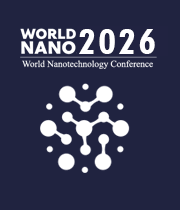Modelling of Nanobiotechnology And/or Mesoscopic Effects
Modelling of Nanobiotechnology and mesoscopic effects related to nanotechnology can provide insights into the fundamental principles of nanoscale systems, from the atomic and molecular level to the larger mesoscale. This can be achieved through the use of computational tools such as molecular dynamics, Monte Carlo simulations, and density functional theory. Molecular dynamics simulations use Newton's laws of motion to track the motion of atoms and molecules, allowing for the calculation of the forces acting between them. By doing so, it is possible to model how Nanobiotechnology interact and respond to external stimuli. Monte Carlo simulations are also used to study Nanobiotechnology and mesoscopic effects. This type of simulation uses random numbers to calculate the probabilities of various outcomes, allowing researchers to explore the possible configurations of a system. Density functional theory is a theoretical tool which can be used to study the electronic structure of Nanobiotechnology. By modelling the behavior of electrons in a system, it is possible to gain insights into the electronic properties of Nanobiotechnology, such as charge transport and optical properties. The modelling of Nanobiotechnology and mesoscopic effects can also be used to further our understanding of nanotechnology and its implications for the design of new materials. By combining the insights gained from these simulations with experimental techniques, it is possible to create new materials with desired properties. This can lead to the development of new materials for applications such as sensors, catalysts, and drug delivery systems.

Harry Ruda
University of Toronto, Canada
Raman Singh
Monash University, Australia
Paulo Cesar De Morais
Catholic University of Brasilia, Brazil
Xiao Hong Nancy Xu
Old Dominion University, United States
S V A R Sastry
Harcourt Butler Technical University, India
Vinayak Adimule
Angadi Institute of Technology and Management, India



Title : 40,000 implants in humans and no failure: The impact of nanomedicine
Thomas J Webster, Hebei University of Technology, China
Title : Cellulose-derived biochar modified with iron oxide and ZnO nanoparticles by a novel one-step pyrolytic method for removal of emerging contaminants from water
Rashad Al Gaashani, Hamad Bin Khalifa University, Qatar
Title : Harnessing the unique properties of engineered nanostructures for sensing
Harry Ruda, University of Toronto, Canada
Title : Circumventing challenges in developing CVD graphene on steels for extraordinary and durable corrosion resistance
Raman Singh, Monash University, Australia
Title : Nano DAP augments productivity, phosphorus use efficiency, and profitability of spring wheat in India
Binaya Kumar Parida, Coromandel International Ltd, India
Title : Lipid nanoparticles formulations: From bench scale to industrial scale
Mohammad A Obeid, RAK Medical and Health Sciences University, United Arab Emirates